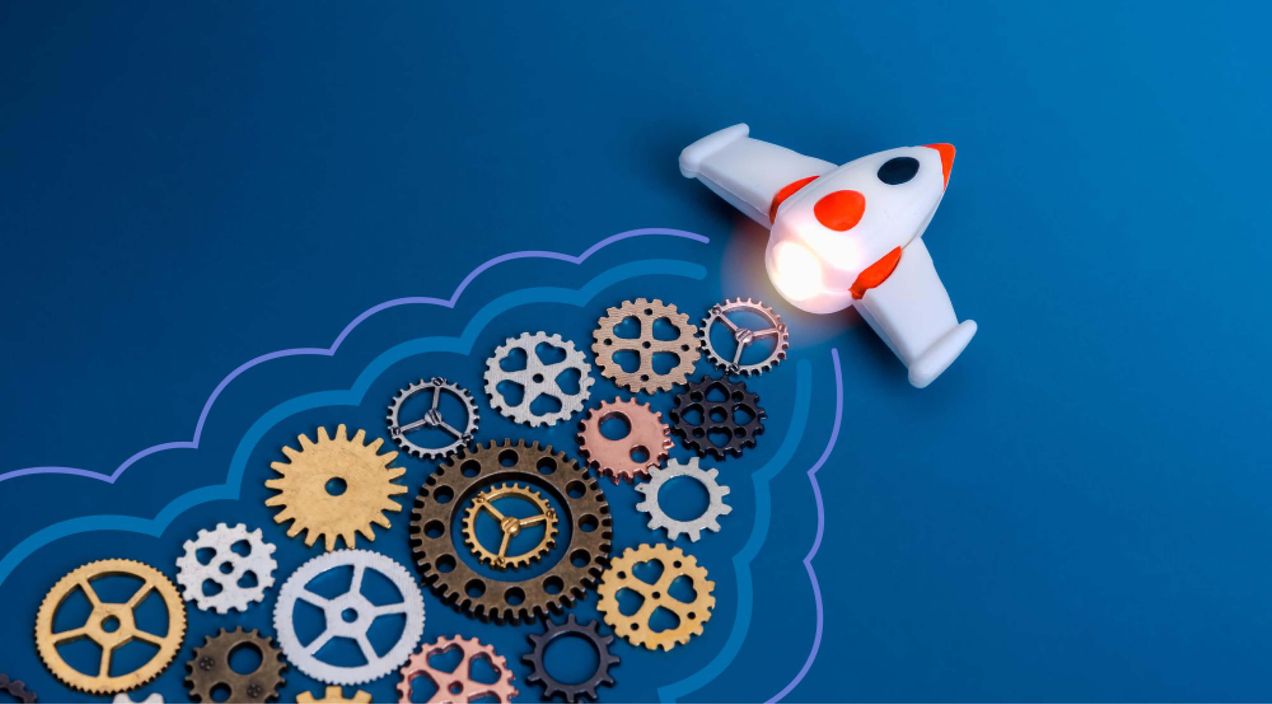What are employee skills: Strategies and top examples to empower employees in 2024

Understanding and cultivating employee skills is crucial for organizational success and growth. Employee skills, defined as the specific abilities and competencies that enable individuals to perform tasks effectively, are fundamental to enhancing productivity, innovation, and overall workplace efficiency.
To empower employees effectively, organizations must adopt strategic approaches that align with contemporary workforce demands. This involves not only identifying and defining the essential skills required but also implementing comprehensive development programs that foster continuous learning and professional growth.
Strategies such as personalized training, mentorship programs, and leveraging technology for skill assessments are pivotal in creating an environment where employees can thrive.
This blog will delve into the definition of employee skills, explore effective strategies for skill development, and highlight the key skills that will empower employees to excel in the contemporary workplace.
What are employee skills?

Employee skills are the specific abilities and competencies that individuals possess, enabling them to perform their job duties effectively and efficiently. These skills encompass a broad spectrum, ranging from technical proficiencies, such as data analysis and software usage, to soft skills like communication, teamwork, and problem-solving.
Essential employability skills are critical for recruitment and significantly impact team and company performance. In the modern workplace, employee skills are essential not only for completing tasks but also for fostering innovation, improving productivity, and enhancing overall organizational performance.
Developing new employee skills involves a continuous process of learning and adaptation. As industries evolve and new technologies emerge in demand, the demand for certain skills shifts, necessitating ongoing training and development initiatives.
Employers must recognize the importance of investing in their workforce by providing opportunities for skill enhancement through workshops, online courses, and mentorship programs.
By prioritizing the cultivation of diverse and relevant skills, organizations can ensure that their employees remain competent, motivated, and capable of meeting future challenges.
What makes a great employee?

A great employee embodies a combination of key traits and skills that collectively contribute to exceptional performance and a positive work environment.
One of the most important qualities is reliability. Great employees consistently meet deadlines, produce high-quality work, and can be trusted to follow through on their commitments. This reliability builds trust and demonstrates a strong work ethic.
Another crucial attribute is adaptability. The ability to adjust to new challenges, learn new skills, and remain flexible is invaluable. Adaptability is an important skill for employees to navigate new positions and dynamic work environments.
Great employees are open to feedback and willing to make changes to improve their performance and align with the organization’s goals.
Effective communication skills also define a great employee. They can convey ideas clearly, listen actively, and collaborate well with colleagues, fostering a culture of teamwork and mutual respect. Good communication, combined well-being along with strong interpersonal skills, minimizes misunderstandings and enhances productivity.
Furthermore, a great employee shows initiative and a proactive attitude. They do not wait for instructions but take ownership of their tasks and seek out ways to contribute to the organization’s success. This sense of self-awareness and ownership often leads to innovation and improved processes.
Finally, emotional intelligence is a significant factor. Great employees manage their emotions well, understand the feelings of others, and maintain positive relationships in the workplace. This emotional awareness helps in navigating conflicts and creating a supportive work environment.
What are the different types of employee skills at work?

Employee skills at work can be broadly categorized into two main types: hard skills and soft skills. Each of these categories encompasses a range of specific skills important for different roles and industries.
Honing irreplaceable job skills is crucial to remain valuable to employers and future-proof oneself in the face of technological innovation and a changing job market.
Communication skills
Effectively communicating is fundamental in any workplace. This includes both verbal communication and written communication, as well as active listening. Strong communication skills ensure that information is clearly conveyed and understood by all parties, facilitating better collaboration and reducing misunderstandings.
Technical skills
Proficiency in specific software, tools, or technologies is crucial in many jobs. These skills are often acquired through formal education or specialized training and are essential for roles that require a high level of technical knowledge, such as IT, engineering, or data analysis. In a civil engineering interview, showcasing your technical expertise and familiarity with industry-specific tools can be key to demonstrating your readiness for the role.
Analytical skills
The ability to analyze data, identify patterns, and make decisions based on logical reasoning is invaluable in many fields. Analytical skills are essential for problem-solving and strategic planning, particularly in finance, research, and data science.
Teamwork and collaboration
The ability to work well with others and contribute to a team is vital in most work environments. This includes skills such as cooperation, conflict resolution, and the ability to build positive relationships with colleagues. Teamwork skills ensure that projects are completed efficiently and effectively.
Problem-solving skills
Identifying problems, developing solutions, and implementing them through problem-solving abilities are critical skills in any job. Problem-solving involves both critical thinking skills and creative thinking, enabling employees to tackle challenges and make effective decisions. These skills help find innovative solutions to complex issues.
Time management skills
Managing time effectively and prioritizing tasks is essential for productivity and meeting deadlines. Time management skills include the ability to organize work, set goals, and create schedules, ensuring that tasks are completed on time and efficiently.
Adaptability
The ability to adjust to new conditions and handle change is increasingly important in today's dynamic work environment. Adaptability includes flexibility and resilience, allowing employees to thrive in various situations and respond effectively to unexpected challenges.
5 Ways to increase employee knowledge and skills

Increasing employee knowledge and skills is essential for organizational growth and employee satisfaction. Here are five effective strategies to achieve this: Assessing skills during the hiring process is crucial to ensure employees develop the right fit for the organization.
1. Training and development programs
- Workshops and seminars: Regularly scheduled workshops and seminars on relevant topics can keep employees up-to-date with industry trends and new skills. Data shows that 77% of business executives agree their organization should help their workers become more employable with relevant skill.
- Online courses and certifications: Provide access to online learning platforms where employees can take courses and earn certifications in their field.
2. Mentorship and coaching
- Pairing with experienced employees: Create a mentorship program where less experienced employees are paired with seasoned professionals to learn on the job.
- One-on-one coaching: Offer personalized coaching sessions to address specific skill gaps and career development needs.
3. Encouraging cross-training
- Rotational programs: Implement job rotation schemes to give employees a broad understanding of different roles within the organization.
- Cross-departmental projects: Encourage employees to participate in projects outside their immediate responsibilities to gain a wider skill set.
4. Access to resources
- Library of resources: Maintain a library of books, journals, and digital resources that employees can access for self-directed learning.
- Subscriptions to professional journals: Provide subscriptions to industry magazines and journals to keep employees informed about the latest developments.
5. Fostering a learning culture
- Incentives for learning: Reward employees who actively pursue further education and skill development with bonuses, promotions, or recognition.
- Regular knowledge-sharing sessions: Host regular meetings where employees can share what they’ve learned from courses, conferences, or personal study.
Qualities vs. skills: What’s the difference at work for employees?

In the workplace, both qualities and skills are essential for employee success, but they serve different functions and contribute to overall performance in distinct ways. Understanding the difference between these two aspects can help organizations better assess and develop their workforce.
Qualities refer to inherent traits or characteristics that define an individual's personality and behavior. These are often innate and deeply rooted in a person's disposition. For example, qualities such as reliability, honesty, empathy, and perseverance are integral to how an employee interacts with others and approaches their work.
These traits shape an individual's work ethic, positive attitude throughout, and the way they handle challenges and relationships in the workplace. Qualities are crucial for creating a positive work environment and fostering teamwork, trust, and effective communication.
Soft skills, like communication, problem-solving, and time management, can also be developed and refined through experience and practice. Skills enable employees to perform their tasks efficiently and meet the technical requirements of their roles.
15 Key employee skills of a good employee

72% of CEOs surveyed say that talent gaps and shortages represent the top business challenges that their companies face. So, here are 15 key employee skills that define a good employee:
- Communication: The ability to clearly convey ideas, instructions, and feedback both verbally and in writing.
- Teamwork: Collaborating effectively with colleagues to achieve common goals and contribute to a positive team dynamic.
- Problem-solving: The ability to identify issues, analyze information, and develop effective solutions.
- Leadership: Inspiring and guiding others, whether formally as a manager or informally within a team management: Efficiently organizing and prioritizing tasks to meet deadlines and manage workload.
- Emotional intelligence: Understanding and managing one’s own emotions, as well as empathizing with and responding appropriately to the emotions of others.
- Conflict resolution: Addressing and resolving disagreements constructively, fostering a harmonious work environment.
- Integrity: Demonstrating honesty, reliability, and ethical behavior in all work-related activities.
- Learning agility: The ability and willingness to learn new skills and adapt to new situations and challenges.
- Negotiation: The ability to reach mutually beneficial agreements and compromises through effective negotiation techniques.
- Motivation: Maintaining a high level of enthusiasm and drive to achieve personal and organizational goals.
- Innovation: Thinking creatively and proposing new ideas to improve processes, products, or services.
- Resilience: The ability to bounce back from setbacks, remain positive, and stay focused under pressure.
- Technical proficiency: Possessing the necessary technical skills specific to one’s job role, such as data analysis, programming, or machinery operation.
- Adaptability: Being flexible and open to change, able to adjust to new tasks, technologies, and environments quickly.
10 Survey questions to test employee skills

Here are ten survey questions designed to assess various employee skills:
- How effectively do you communicate with team members and stakeholders? (1-5)
- Rate your proficiency in [specific technical area relevant to the job].
- Describe a complex problem you solved recently at work. What approach did you take, and what was the outcome? (Open-ended)
- How do you ensure effective collaboration within your team? Provide an example of a successful collaborative project you were part of. (Open-ended)
- Have you ever led a team or project? If yes, describe your leadership style and how you motivated your team members to achieve goals. (Open-ended)
- How do you handle unexpected changes or challenges in your work environment? Provide an example of a time when you successfully adapted to change. (Open-ended)
- How do you prioritize tasks and manage your workload to ensure deadlines are met? (Open-ended)
- Describe a situation where you successfully resolved a difficult customer issue. What steps did you take, and what was the outcome? (Open-ended)
- How do you foster creativity and innovation in your work? Provide an example of a time when your innovative approach led to a positive outcome. (Open-ended)
- How do you handle workplace conflicts or challenging interpersonal situations? Provide an example of a time when you effectively managed emotions in a difficult situation. (Open-ended)
How are employee skills linked to employee attrition at work?

Employee skills are closely linked to employee attrition in several ways:
- Career development opportunities: Employees who perceive limited opportunities for skill development and career advancement may feel stagnant in their roles. This lack of growth can lead to dissatisfaction and ultimately prompt them to seek opportunities elsewhere.
- Market demand for skills: In industries where certain skills are in high demand, employees possessing these skills may be more prone to job offers from competitors offering better career growth prospects or compensation packages.
- Job fit and satisfaction: When employees feel that their skills are not fully utilized or aligned with their job responsibilities, they may experience job dissatisfaction. This mismatch between skills and job requirements can contribute to higher turnover rates as employees seek roles where they can utilize their skills effectively.
- Training and development: Organizations that invest in employee training and development tend to have higher retention rates. When employees are provided with opportunities to acquire new skills and knowledge, they are more likely to feel valued and committed to the organization.
- Competitive advantage: Businesses that prioritize skill development create a competitive advantage by fostering a skilled workforce capable of adapting to changing market conditions and technological advancements. This can lead to higher employee satisfaction and lower turnover rates.
What are some of the necessary skills employees should possess in 2024 and beyond?

In 2024 and beyond, employees will benefit greatly from possessing a combination of both technical and soft skills that are crucial for navigating the evolving workplace landscape. Here are some necessary skills employers look our for:
- Digital literacy: As technology continues to advance, employees should be adept at using digital tools, platforms, and software relevant to their roles.
- Critical thinking: The ability to analyze information, evaluate situations, and make informed decisions based on data and evidence.
- Creativity: Thinking innovatively and generating new ideas to solve problems and improve processes.
- Adaptability and flexibility: Being able to pivot and adjust to changes in technology, market conditions, and organizational needs.
- Emotional intelligence: Understanding and managing one’s own emotions and empathizing with others to build effective relationships and resolve conflicts.
- Communication skills: Both verbal and written communication skills are essential for effectively conveying ideas, collaborating with others, and influencing stakeholders.
- Collaboration and teamwork: Working effectively in diverse teams, leveraging individual strengths, and contributing towards shared goals.
- Leadership and influence: Whether in formal or informal roles, having the ability to inspire others, take initiative, and drive positive change.
- Problem-solving: Identifying issues, brainstorming solutions, and implementing effective strategies to achieve desired outcomes.
- Resilience and stress management: Managing pressure, adapting to setbacks, and maintaining productivity in challenging situations.
Significance of an employee skills checklist: 13 Points to remember
An employee skills checklist holds significant importance for both employees and employers alike, serving as a valuable tool for enhancing organizational effectiveness and individual development. Here are 13 key points highlighting its significance:
- Assessment: It allows employers to assess current skills within their workforce, identifying strengths and areas for improvement.
- Alignment with roles: Ensures employees’ skills align with their job responsibilities, optimizing job fit and performance.
- Training and development: Guides the creation of targeted training programs to address skill gaps and foster continuous learning.
- Career development: Facilitates discussions on career aspirations and growth opportunities based on existing skills and desired competencies.
- Succession planning: Helps in identifying potential candidates for future roles within the organization based on their skills and readiness.
- Performance management: Provides a basis for evaluating employee performance against established skill benchmarks.
- Promotion criteria: Supports decisions regarding promotions and internal advancements based on demonstrated skills and competencies.
- Recruitment and hiring: Assists HR departments in drafting job descriptions and conducting interviews by specifying required skills.
- Resource allocation: Enables efficient allocation of resources by matching skills to project requirements and team positions.
- Strategic planning: Informs strategic workforce planning by identifying critical skill gaps that may impact business objectives.
- Employee engagement: Enhances employee engagement by recognizing and valuing individual skills and contributions.
- Legal compliance: Ensures compliance with industry regulations and standards that mandate specific skill requirements.
- Continuous improvement: Promotes a culture of continuous improvement by encouraging employees to update and expand their skill sets.
9 Strategies for leaders to identify and develop relevant employee skills for their career advancement

Identifying and developing relevant employee skills for career advancement is crucial for leaders looking to build a strong, adaptable workforce. Here are nine strategies for leaders to achieve this:
1. Conduct skills assessments and gap analysis
Leaders should initiate regular skills assessments to evaluate the current capabilities of their team members. By conducting thorough gap analyses, they can pinpoint specific areas where additional skills are needed to support career advancement.
This process involves reviewing existing competencies against desired skill sets and identifying areas for improvement.
2. Create individual development plans (IDPs)
Collaborate closely with employees to establish personalized IDPs tailored to their career aspirations and organizational objectives. These plans should outline clear developmental milestones and strategies for acquiring new skills.
By aligning IDPs with both individual growth trajectories and company needs, leaders can foster a sense of purpose and direction among their team members.
3. Foster mentorship and coaching relationships
Encourage mentorship and coaching within the organization by pairing employees with experienced mentors who can provide guidance and support. These relationships are invaluable for transferring knowledge, refining skills, and navigating career challenges.
Regular coaching sessions enable leaders to offer personalized feedback and cultivate a culture of continuous learning and improvement.
4. Provide targeted training and workshops
Offer comprehensive training programs and workshops designed to enhance both technical competencies and soft skills relevant to career advancement. These initiatives should address identified skill gaps and empower employees to stay abreast of industry trends and best practices.
By investing in targeted training, leaders demonstrate their commitment to developing a skilled and knowledgeable workforce.
5. Implement job rotation and stretch assignments
Facilitate opportunities for employees to broaden their skill sets through job rotation and stretch assignments. By rotating individuals across different roles and projects, leaders enable them to gain diverse experiences and expand their capabilities.
Stretch assignments, which challenge employees to take on responsibilities beyond their current scope, foster resilience, and promote skill development in real-world contexts.
6. Offer constructive feedback and performance reviews
Conduct regular performance reviews that include constructive feedback on skill development and career progression. Transparent discussions about strengths, areas for improvement, and alignment with organizational goals help employees understand expectations and prioritize skill enhancement.
Effective feedback mechanisms empower leaders to nurture talent and cultivate a culture of continuous improvement.
7. Encourage continuous learning opportunities
Promote a culture of active learning by encouraging employees to pursue further education, certifications, and professional development opportunities. Provide access to resources such as online courses, workshops, and industry conferences that facilitate skill acquisition and knowledge enrichment.
Leaders who prioritize continuous learning demonstrate their commitment to individual growth and organizational resilience.
8. Recognize and reward skill development efforts
Acknowledge and reward employees who actively engage in skill development and demonstrate tangible progress toward their career goals. Recognition can take various forms, including praise, promotions, bonuses, or opportunities for increased responsibility.
By linking rewards to skill acquisition and application, leaders reinforce a culture of achievement and incentivize ongoing professional development.
9. Stay informed about industry trends and organizational needs
Remain proactive in staying updated about industry trends, technological advancements, and evolving organizational needs. Leaders should regularly assess the relevance of existing skill sets and anticipate future skill requirements.
By aligning skill development initiatives with strategic priorities and market demands, they ensure that employee growth trajectories align with the long-term success of the organization.
Significance of employee development survey to improve employee skills
Conducting an employee development survey holds significant value in enhancing employee skills and overall organizational effectiveness. This survey serves as a structured mechanism to gather valuable insights into employees' current skill levels, aspirations for growth, and perceptions of existing development opportunities within the organization.
By systematically collecting feedback through such surveys, leaders gain a comprehensive understanding of the specific areas where skill development is most needed and can tailor training programs accordingly.
Moreover, an employee development survey fosters a sense of inclusivity and empowerment among employees, demonstrating the organization's commitment to their professional growth. It allows leaders to identify potential mentors and coaching opportunities, as well as to gauge the effectiveness of current development initiatives.
Through clear communication of survey findings and subsequent action plans, leaders can build trust and engagement within their teams, motivating employees to actively participate in their own skill enhancement.
Ultimately, the insights gleaned from an employee development survey enable leaders to strategically allocate resources and prioritize skill-building efforts that align with both individual career aspirations and organizational goals.
This proactive approach not only enhances employee retention by addressing skill gaps but also cultivates a culture of continuous learning and improvement essential for long-term organizational success.
Conclusion
Leveraging employee development surveys to enhance skills is pivotal for organizational success. By listening to employees' needs and aspirations, leaders can strategically align training programs and mentorship opportunities to foster growth.
This approach not only improves employee satisfaction and retention but also boosts overall team performance and adaptability. Embracing a culture of continuous feedback and learning, facilitated by tools like CultureMonkey, ensures that skill development remains a dynamic and integral part of the organizational journey toward sustained excellence.



